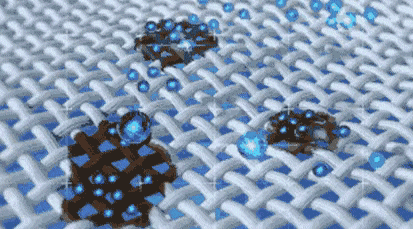The current status of surfactant applications in the field of disinfection, the main forms, and the structure and properties of quaternary ammonium salts and Tego-type surfactants with bactericidal effects.
The addition of various types of surfactants to traditional disinfectant drugs to improve the disinfection effect, and the addition of antimicrobial agents to various detergents to achieve the role of washing and sterilization and improve the antimicrobial effect, using the negative carrier, solubilization and emulsification of surfactants to overcome the shortcomings of the original dosage form and change the disinfectant dosage form to improve its comprehensive performance.
Research on the application of surfactants in disinfection has been developing rapidly in recent years, and the variety and number of related products approved for marketing are increasing. To summarize, there are four main areas.
1. Direct use of surfactants with bactericidal effects, and new varieties are constantly being introduced.
2. Adding surfactants to traditional disinfectant drugs to improve and enhance the disinfection effect and to achieve efficiency.
2. Adding surfactants to traditional disinfectant drugs to improve and enhance the disinfection effect and to achieve efficiency.
4. Use surfactants to change the dosage form and use method of disinfectants and improve the comprehensive performance of disinfectants. The following are introduced one by one.
The role of surfactants in disinfectants and germicides: There are two main types of surfactants, i.e., cationic surfactants such as quaternary ammonium disinfectants and amphoteric surfactants such as Tego disinfectants.

Bacteria and antibacterial effect: detergent with good washing effect, help remove contaminated microorganisms, and has a certain degree of bactericidal effect, but the degree of sterilization is low. If you add a certain amount of broad-spectrum bactericides (such as trichlorohydroxydiphenyl ether, triclocarbon, etc.), can significantly improve its combined effect of bacteria removal and antibacterial.
Adding 4% mass fraction of trichlorohydroxydiphenyl ether disinfectant to the soap preparation process results in an antibacterial soap that simultaneously achieves washing, decontamination and sterilization functions.
Changing the role of dosage form: Using surfactant as a carrier, iodine can be complexed with polyol ether or PVP under certain conditions, which is the widely used iodophor disinfectant, which can overcome the shortcomings of yellow staining and not easy decolorization of iodine. It has become the disinfectant of choice for medical injections and hospital surgeries.
In addition, there are reports and applications of emulsions, emulsifiers and foam disinfectants using the emulsifying and foaming effects of surfactants.
*Disclaimer: The content contained in this article comes from the Internet, WeChat public numbers and other public channels, and we maintain a neutral attitude toward the views expressed in the article. This article is for reference and exchange only. The copyright of the reproduced manuscript belongs to the original author and the institution, and if there is any infringementPlease contact Jetson Chemical for deletion
